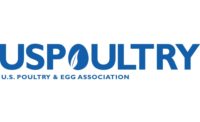Dana Weatherford, vice president of Agri Stats, noted that almost every segment of the poultry industry lost money for all or most months of 2008. While some industries struggled early in 2009, he noted that the market was starting to improve as the price of grain stabilized.
Brian Coan, senior purchasing supervisor for Chik-fil-A, noted that the five areas that the foodservice industry focuses on are value, healthier options, convenience, environmental stewardship and community stewardship. From their protein suppliers, the foodservice operators want quality, consistency, competitive pricing, growth potential and added value.
“As a customer, we would like to see systems and processes in place that give us the peace of mind that you're doing the right thing,” he said, including bing up to speed on the latest equipment and having good process controls. Suppliers must be able to adhere to specifications, and their quality assurance staff should be involved in the production process.
Coan also stressed the importance of communication between suppliers and customers. “We'll pay for quality, but we want a consistent-quality product as well. “We don't ever want a supplier to be afraid to bring us a good solution to a problem that we may have, or a way to boost efficiency.
Speaking for the consumer was Michael Kowalcyk of the Center for Foodborne Illness Research & Prevention. Kowalcyk. He pointed out USDA research that stated foodborne illnesses accounted for one of every 100 hospitalizations and one of every 500 deaths.
“Using conservative estimates, the USDA attributes the annual cost of five pathogens (Campylobacter, Salmonella, E. coli O157H:7, non-O157 STEC and Listeria monocytogenes) cause an estimated $6.9 billion in lost productivity, medical costs and premature deaths,” he said. “[It does not] reflect the economic costs that the victims and their families suffer,” as well as the emotional trauma inflicted. Kowalcyk put a human face on the issue, telling about his 2-year-old son Kevin, who died in 2001 as a result of E. coli O157:H7 poisoning.
He noted that consumer confidence in the food supply has eroded in recent years. The Food Marketing Institute's 2007 annual survey showed that 66 percent of Americans were confident in the food supply, down from 82 percent in 2006.
“In today's market, product is transported several thousand miles across the U.S., and the failure of one actor to prevent contaminated product from entering into commerce will ripple across the industry and can have a serious affect on the commodity,” he said. He encouraged companies to take a continuous process improvement philosophy to food safety, an ongoing cycle where they plan ahead for change, execute the plan, check and study the results, and act on them, either by standardizing or repeating the process.



Report Abusive Comment